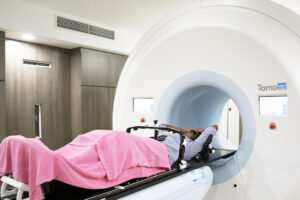Navigating Carpal Tunnel Syndrome for Optimal Hand Health
- What are the most common causes of carpal tunnel syndrome?
Carpal tunnel syndrome (CTS) is primarily caused by the compression of the median nerve in the wrist. While repetitive hand movements over extended periods of time, such as writing, computer use, and manual labour (including office work), are the most prevalent cause of CTS, there are other factors that can contribute to its development. These include traumatic wrist fractures, as well as inflammatory diseases like rheumatoid arthritis and gout. It’s important to note that while repetitive hand movements are commonly associated with CTS, they are not the sole cause, and other underlying conditions or injuries can also lead to the development of this condition.
- What are the common symptoms of carpal tunnel syndrome (CTS)?
Carpal tunnel syndrome (CTS) is characterised by a variety of symptoms that primarily affect the hand and fingers. The most experienced symptoms include:
Numbness: Individuals with CTS often experience numbness in specific areas of the hand, particularly the thumb, index finger, middle finger, and a portion of the ring finger. This numbness may vary in intensity and duration.
Tingling Sensation: Many people with CTS describe a tingling sensation, often described as “pins and needles,” in the affected fingers. This sensation can be intermittent or constant.
Pain: CTS can cause pain in the hand, which may range from mild to moderate. The pain is typically felt in the same areas affected by numbness and tingling, such as the thumb, index finger, middle finger, and part of the ring finger. The pain may extend to the wrist or forearm.
Weakness: Weakness and a decrease in grip strength are common symptoms of CTS. Individuals may find it challenging to perform tasks that require fine motor skills or gripping objects firmly.
Numb and tingling sensation over palm and parts of your finger like in the picture
- Is carpal tunnel syndrome more common in men or women?
Carpal tunnel syndrome (CTS) is more commonly observed in women compared to men. Women, particularly those in their 40s and 50s, have a higher likelihood of developing CTS. Pregnancy can further increase the risk of CTS in women. However, it is important to note that after delivery, symptoms of CTS typically resolve.
It is still possible for men to develop CTS, but the condition is more prevalent among women. The exact reasons for this gender disparity are not fully understood, but hormonal factors, anatomical differences, and variations in occupational or lifestyle factors may contribute to the higher prevalence in women.
- What are the risk factors associated with CTS?
Carpal tunnel syndrome (CTS) can be influenced by several risk factors. These include: Medical conditions: Certain medical conditions can increase the risk of developing CTS. Individuals with conditions such as diabetes and hypertension are more prone to CTS. Additionally, inflammatory diseases like rheumatoid arthritis and gout can contribute to the development of CTS.
Previous wrist injury: A history of wrist fractures or other injuries to the wrist can raise the risk of CTS. These injuries may lead to structural changes or deformities in the wrist, increasing the likelihood of nerve compression.
Obesity: Being overweight or obese is associated with a higher risk of developing CTS. The excess body weight can contribute to increased pressure on the median nerve within the carpal tunnel.
Occupation and hand use: Certain occupations or activities that involve repetitive hand movements or prolonged wrist flexion can increase the risk of CTS. Engaging in heavy work with a weak hand or poor hand conditioning can also contribute to the development of CTS.
It’s important to note that while these factors may increase the risk of CTS, the condition can still develop in individuals without these risk factors.
- When should I see a doctor about carpal tunnel syndrome?
If you begin experiencing symptoms such as tingling or numbness in your hands, it is recommended to consult a doctor, preferably a hand surgeon, as soon as possible. Early intervention can lead to more effective treatment and potentially faster recovery.
It’s important to address symptoms promptly because if carpal tunnel syndrome (CTS) is left untreated for an extended period, it may result in further nerve damage and prolonged discomfort. Timely medical attention allows for proper evaluation, accurate diagnosis, and appropriate management of CTS.
Remember, every individual’s situation is unique, and a healthcare professional can provide personalized guidance based on your specific symptoms and medical history. How is carpal tunnel syndrome diagnosed?
- What are the treatment options for CTS? Can carpal tunnel syndrome be reversed?
The diagnosis of carpal tunnel syndrome (CTS) is primarily based on clinical evaluation, including an assessment of symptoms, location of numbness, and physical examination to evaluate weakness and nerve irritation. In some cases where the diagnosis is unclear or there may be overlapping conditions like cervical disc prolapse, a nerve conduction study (NCS) may be performed. The NCS test is NOT considered the gold standard, and it is important to note that there false positives and negatives can occur.
Regarding treatment options for CTS, they can vary depending on the severity of symptoms and individual circumstances.
Here are some commonly recommended approaches:
Non-surgical treatments: In mild to moderate cases of CTS, non-surgical interventions are often the initial approach. These may include:
Wrist splinting: Wearing a splint at night can help keep the wrist in a neutral position, relieving pressure on the median nerve.
Lifestyle modifications: Adjusting activities that may aggravate symptoms, taking regular breaks, and practicing proper ergonomics can be beneficial.
Medications: Nonsteroidal anti-inflammatory drugs (NSAIDs) or corticosteroid injections may be prescribed to reduce pain and inflammation.
Surgical options: If non-surgical treatments do not provide sufficient relief or if the symptoms are severe, surgery may be recommended. Carpal tunnel release surgery aims to relieve pressure on the median nerve by enlarging the carpal tunnel. It is generally an effective procedure with a high success rate.
- Is there anything I can do to prevent CTS?
Treatment options vary from time of presentation and severity of compression of the Median Nerve compression. If early enough (less than 6 weeks) it is potential to resolve/reserve completely is higher. However, with time, that potential is reduced.
- Any other comments on CTS?
Early diagnosis and prompt treatment play a crucial role in achieving favourable outcomes for carpal tunnel syndrome (CTS). Therefore, it is important to seek medical assessment if you experience symptoms suggestive of CTS, such as tingling in the hand. However, it’s important to be aware that there are other conditions, such as cervical radiculopathy or nerve compression neuropathy, that can also cause similar symptoms. A proper evaluation by a healthcare professional can help determine the accurate cause of your symptoms.
It is worth noting that resolving CTS symptoms does not guarantee that the condition cannot recur. Taking steps to properly condition and strengthen the hand through stretching and strengthening exercises during therapy can help minimise the risk of recurrence. These exercises can help maintain flexibility, improve muscle strength, and promote overall hand and wrist health.
Diagnosis and Treatment
Furthermore, it’s essential to understand that every individual’s experience with CTS can vary, and the response to treatment may differ. It is advisable to follow the recommendations and guidance of your healthcare provider, as they can provide personalised advice based on your specific condition and needs.
Remember, early intervention, proper conditioning, and ongoing hand and wrist care can contribute to better outcomes and reduce the risk of recurrence. Stay proactive in managing your hand health and consult with healthcare professionals for any concerns or questions regarding CTS.
by Dr Ruban Sivanoli, Consultant Orthopeadic Surgeon, Hand, Upper Limb and Microsurgeon.





